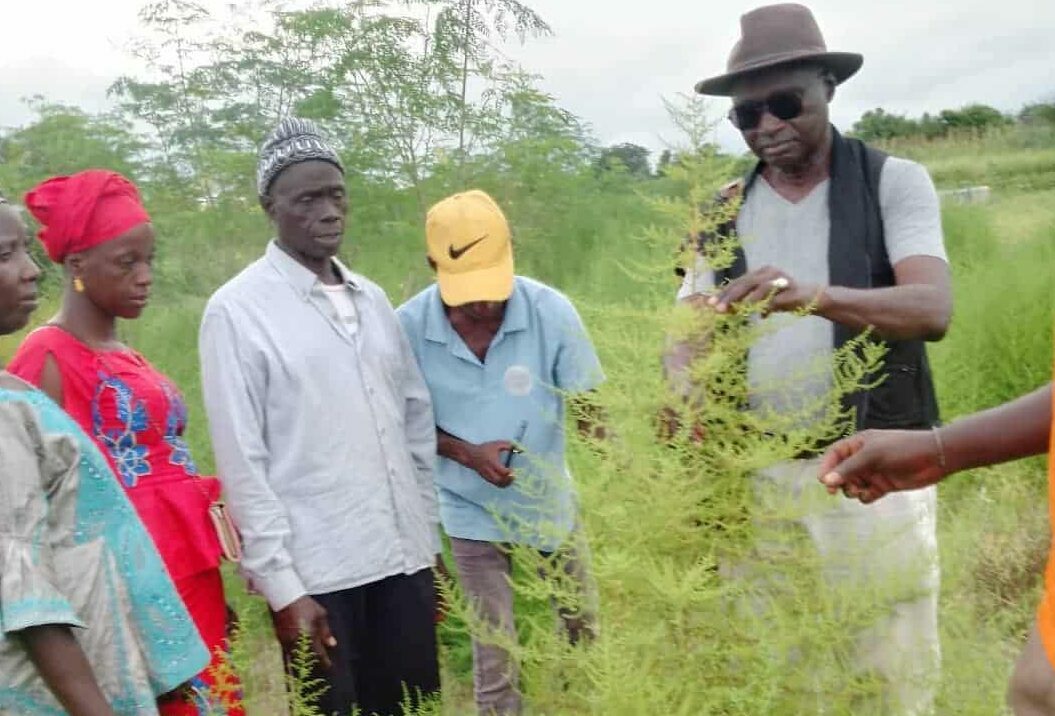Why are you launching these two pilot Artemisia Houses as part of this overall project?
In 2018, I received training in the cultivation and therapeutic use of Artemisia at the Tivaouane Artemisia House (Senegal).
In the south of the country, rainfall is high, leading to a high incidence of mosquitoes and many cases of malaria and bilharzia. In the north too, malaria wreaks havoc, this time due to the presence of the Senegal River and its tributaries.
People working on these family farms are frequently ill, leading to high absenteeism. So it made sense to develop knowledge and cultivation of Artemisia in these areas, which have been badly damaged by chemical agriculture and where we are working to develop agroforestry. We wanted to set up a comprehensive project that would have an impact on all aspects of local people’s lives, from changing farming practices to improving their health. We therefore launched these two pilot projects in April 2023. The local people are very enthusiastic; they have understood that Artemisia will increase their workforce and that there will be fewer malaria sufferers.
How do you organise your work in these two Artemisia Houses?
I work with three colleagues. The first is dedicated to the Artemisia House in Podor, the second to the Artemisia House in Kolda, and the third is mobile with me. Since June, we’ve been raising awareness and training people in agroforestry and Artemisia cultivation. We go out into the villages to meet the farmers’ families and we co-construct the whole project with them. We buy the plants and supervise cultivation.
We aim to plant 30,000 trees in 2023 and 20,000 in 2024. We have already planted 22,000 and for the moment, things are going according to plan.
We have trained six farmers in the northern region and six in the southern region within the framework of the Relais association. So that’s twelve people in total, who in reality represent twelve families, who have then returned to their regions to raise awareness and train their communities.
We will soon be setting up two Artemisia nurseries.
For 2023-2024, we have planned 1 hectare of Artemisia/gombo market gardening in each structure, then we will add millet or sorghum in subsequent years. We plan to harvest 3 or 3.5 tonnes of Artemisia for each Artemisia House.
And our ambition is to develop this model throughout the network.
From 2025, we want to develop ten Artemisia nurseries in ten different villages. But that’s a decision we’ll all have to make together, as we continue to construct this project together with the farmers.
On this point, I would like to pay tribute to the considerable technical support provided by the Maison de l’Artemisia France through the visit to Senegal in early November of one of its members, Darling Guidigan. His visit helped to consolidate the knowledge acquired by the farmers of the two local Artemisia Houses and the members of the Green & Fertile Africa team, in particular on the cultivation of Artemisia and its use in the treatment and prevention of malaria and bilharzia.





